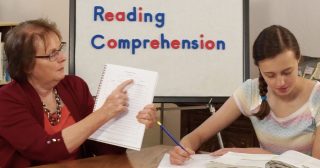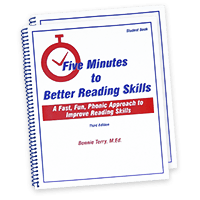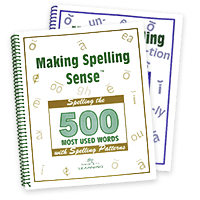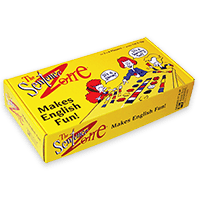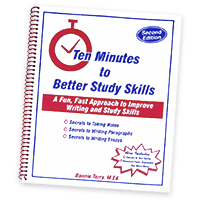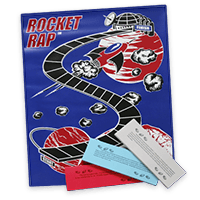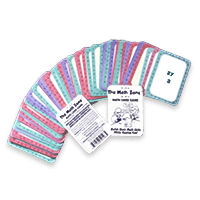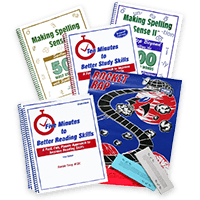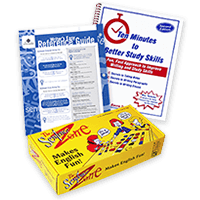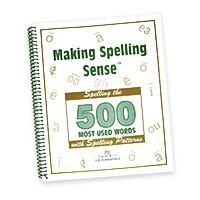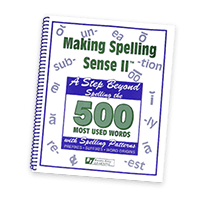Can You Improve Reading Speed & Fluency in 5 Minutes a Day?
December 18th, 2008Miriam writes:
This child knows how to read. The problem is bringing him up to speed. He reads 23 words per minute and according to the teacher he should be at 43 words per minute! What do I do to help?
Hi Miriam,
Schools, teachers, parents, even homeschooling parents are becoming more concerned about reading fluency and speed with good reason. Children are expected to learn more than ever before and to learn faster than ever before. In the classroom it doesn’t matter if you have a learning problem, LD, dyslexia, or ADD. Every child is expected to learn faster and to read faster. As a parent though, it can be tough knowing what to do about it. How can you help your child improve their reading speed?
Let’s look at the underlying cause first. Typically when a child knows how to read but they are slow readers the actual problem is due to visual tracking difficulties. To tell if this is the case, listen to them read aloud. Are they skipping, omitting, or repeating words when they read OR are they mispronouncing them?
It doesn’t matter whether a child is dyslexic, has an identified learning disability, or are even gifted, some children are slow readers. And, usually when a child is a slow reader it is because they are missing bits and pieces when they are reading, so they re-read the text to make it make sense to them. This happened often in my home with one of my children. He had tested to be gifted, but took ‘forever’ to read his assignments.
The other problem could be that the child is a slow processor – if they read accurately aloud but are slow when they are reading. The solution to both of these problems – the skipping & repeating words or the slow processing of the words is the same – reading drills that are short in duration that are specifically designed to work on the visual tracking as well as speed in a short time frame. See Five Minutes To Better Reading Skills.
If the underlying cause is one of mispronunciation, there is another solution.
What Is Reading Fluency?
Reading fluency is retrieval automaticity. To be an efficient reader, you need to be able to retrieve words automatically. The studies also show that slow single word reading leads to poor comprehension and frustration. If you can’t read rapidly, you can’t hold large pieces of language – text in meaning!
When you read with fluency you do so without thinking of the reading process. This automatic reading then gives you the ability to comprehend what you have read.
Reading fluency encompasses the speed or rate of reading, as well as the ability to read materials with expression. M. S. Meyer and R. H. Felton (1999) defined fluency as “‘the ability to read connected text rapidly, smoothly, effortlessly, and automatically with little conscious attention to the mechanics of reading, such as decoding”.
Time Needed to Improve Fluency
Cecil Mercer, a researcher from the University of Florida, published his results from his study Effects of Fluency Intervention for Middle Schoolers with Specific Learning Disabilities in (2000) stating daily practice can be for as little as five or six minutes. Substantial gains in reading fluency came from repeated oral reading of various sorts such as letters or words for five or six minutes a day. The key to the success was doing the repeated oral reading over a period of time e.g. six months to twenty-three months.
Research on Fluency
The importance of reading fluency has been noted for many years. In fact one of the first reading fluency researches, psychologist William MacKeen Cattell (1886), discovered that you could read a word (like tiger) faster than you can name a picture of a pouncing feline creature!
Cattell was the first person to recognize that we become quite ‘automatic’ when we read. In fact, we are more automatic when reading than when speaking. So, learning to read automatically is a huge achievement for our brain. This is a capacity that we have, learning something so well that we can do it almost without thinking.
According to research done by S. Jay Samuels in the 1970’s, “If you are slow in word identification, you have trouble focusing on and attending to what you are reading, and therefore your comprehension is lower than it should be.” Thirty years later (2006) he goes on to say that “The link between fluency and overall reading proficiency is now well established. Comprehension requires the fluent master of the surface-level aspects of reading.”
Peter Schreiber in the 80’s stated, “It is not just reading, but hearing the rhythm and flow of the language will help students improve reading.”
Reid Lyon, Ph.D. stated in 1997, “While the ability to read words accurately is a necessary skill in learning to read, the speed at which this is done becomes a critical factor in ensuring that children understand what they read. As one child recently remarked, ‘If you don’t ride a bike fast enough, you fall off.’ Likewise, if the reader does not recognize words quickly enough, the meaning will be lost… If the reading of the words on the page is slow and labored, the reader simply cannot remember what he or she has read, much less relate the ideas they have read about to their own background knowledge.”
In 2001, Nancy Mather and Sam Goldstein stated, “Children are successful with decoding when the process used to identify words is fast and nearly effortless or automatic.” As noted, the concept of automaticity refers to your ability to recognize words rapidly with little attention required to the word’s appearance. “The ability to read words by sight automatically is the key to skilled reading” (Ehri, L.C., 1998).
Some children have developed accurate word pronunciation skills but read slowly. For these children, decoding is not automatic or fluent, and their limited fluency may affect performance in the following ways:
They read less text than peers and have less time to remember, review, or comprehend the text.
They expend more cognitive energy than peers trying to identify individual words.
They may be less able to retain text in their memories and less likely to integrate those segments with other parts of the text (Mastropieri, Leinart, & Scruggs, 1999).
If you don’t read well, you don’t want to read. Improving fluency is a critical component to improving reading. See Five Minutes to Better Reading Skills. It contains reading drills specifically designed to improve reading fluency, phonics, visual processing speed, visual tracking, and visual closure in 5 minutes a day.
Remember, whether your child has dyslexia, a learning disability, trouble with phonics, or trouble with reading comprehension, you can help them improve their reading with fluency training. It doesn’t matter if you homeschool or if your child attends a public school, every child can benefit from fluency training.
I hope this has been helpful.
Bonnie Terry, M. Ed., BCET







